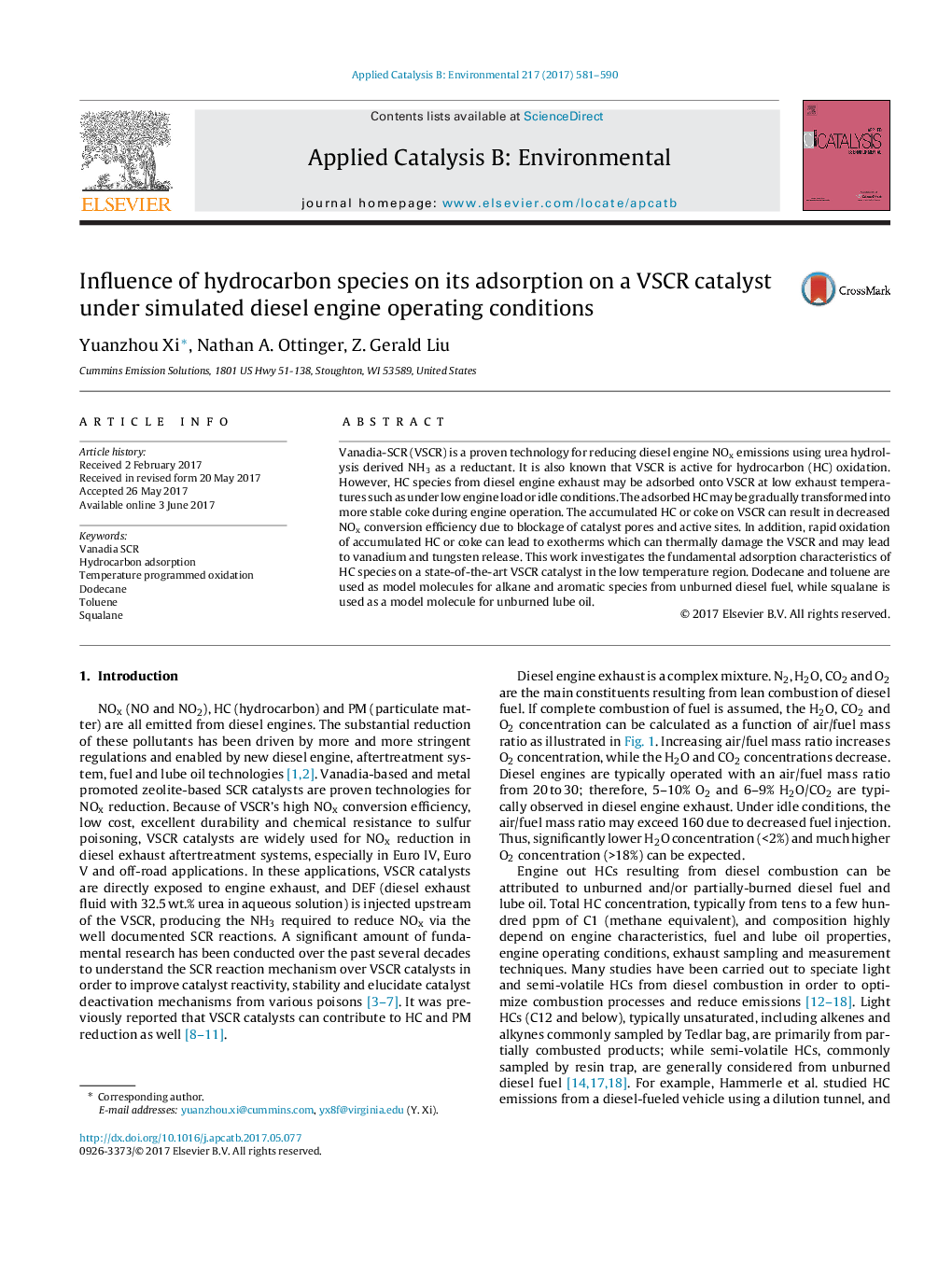| Article ID | Journal | Published Year | Pages | File Type |
|---|---|---|---|---|
| 6454026 | Applied Catalysis B: Environmental | 2017 | 10 Pages |
â¢Low temperature adsorption of three different HCs on VSCR was conducted.â¢Uptake from adsorption of diesel model molecules is low and plateaus after 2 h.â¢Lube oil model molecule continuously adsorbs on VSCR and leads to high uptake.â¢Diesel and lube oil model molecules adsorb onto VSCR via different mechanisms.â¢Heavy HCs are likely main contributors to carbonaceous deposits found on VSCR in-use.
Vanadia-SCR (VSCR) is a proven technology for reducing diesel engine NOx emissions using urea hydrolysis derived NH3 as a reductant. It is also known that VSCR is active for hydrocarbon (HC) oxidation. However, HC species from diesel engine exhaust may be adsorbed onto VSCR at low exhaust temperatures such as under low engine load or idle conditions. The adsorbed HC may be gradually transformed into more stable coke during engine operation. The accumulated HC or coke on VSCR can result in decreased NOx conversion efficiency due to blockage of catalyst pores and active sites. In addition, rapid oxidation of accumulated HC or coke can lead to exotherms which can thermally damage the VSCR and may lead to vanadium and tungsten release. This work investigates the fundamental adsorption characteristics of HC species on a state-of-the-art VSCR catalyst in the low temperature region. Dodecane and toluene are used as model molecules for alkane and aromatic species from unburned diesel fuel, while squalane is used as a model molecule for unburned lube oil.
Graphical abstractDownload high-res image (105KB)Download full-size image
